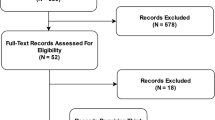Abstract
The development of artificial intelligence (AI)-based technologies in medicine is advancing rapidly, but real-world clinical implementation has not yet become a reality. Here we review some of the key practical issues surrounding the implementation of AI into existing clinical workflows, including data sharing and privacy, transparency of algorithms, data standardization, and interoperability across multiple platforms, and concern for patient safety. We summarize the current regulatory environment in the United States and highlight comparisons with other regions in the world, notably Europe and China.
This is a preview of subscription content, access via your institution
Access options
Access Nature and 54 other Nature Portfolio journals
Get Nature+, our best-value online-access subscription
$29.99 / 30 days
cancel any time
Subscribe to this journal
Receive 12 print issues and online access
$209.00 per year
only $17.42 per issue
Buy this article
- Purchase on Springer Link
- Instant access to full article PDF
Prices may be subject to local taxes which are calculated during checkout

Debbie Maizels/Springer Nature

Debbie Maizels/Springer Nature

Debbie Maizels/Springer Nature
Similar content being viewed by others
References
Gulshan, V. et al. Development and validation of a deep learning algorithm for detection of diabetic retinopathy in retinal fundus photographs. JAMA 316, 2402 (2016).
Kermany, D. S. et al. Identifying medical diagnoses and treatable diseases by image-based deep learning. Cell 172, 1122–1131.e9 (2018).
Esteva, A. et al. Dermatologist-level classification of skin cancer with deep neural networks. Nature 542, 115–118 (2017).
Cheng, J.-Z. et al. Computer-aided diagnosis with deep learning architecture: applications to breast lesions in US images and pulmonary nodules in CT scans. Sci. Rep. 6, 24454 (2016).
Goodfellow, I., Bengio, Y. & Courville, A. Deep Learning (The MIT Press, Cambridge, MA, USA, 2016).
Murdoch, T. B. & Detsky, A. S. The inevitable application of big data to health care. JAMA 309, 1351–1352 (2013).
Jiang, F. et al. Artificial intelligence in healthcare: past, present and future. Stroke Vasc. Neurol. 21, 230–243 (2017).
Johnson, K. W. et al. Artificial intelligence in cardiology. J. Am. Coll. Cardiol. 71, 2668–2679 (2018).
Tang, A. et al. Canadian association of radiologists white paper on artificial intelligence in radiology. Can. Assoc. Radiol. J. J. Assoc. Can. Radiol. 69, 120–135 (2018).
Pelcyger, B. Artificial intelligence in healthcare: Babylon Health & IBM Watson take the lead. Prescouter https://prescouter.com/2017/12/artificial-intelligence-healthcare/ (2017).
De Fauw, J. et al. Clinically applicable deep learning for diagnosis and referral in retinal disease. Nat. Med. 24, 1342–1350 (2018).
Slomka, P. J. et al. Cardiac imaging: working towards fully-automated machine analysis & interpretation. Expert Rev. Med. Devices 14, 197–212 (2017).
Wang, D., Khosla, A., Gargeya, R., Irshad, H. & Beck, A. H. Deep learning for identifying metastatic breast cancer. Preprint at https://arxiv.org/abs/1606.05718 (2016).
Lakhani, P. & Sundaram, B. Deep learning at chest radiography: automated classification of pulmonary tuberculosis by using convolutional neural networks. Radiology 284, 574–582 (2017).
Sitapati, A. et al. Integrated precision medicine: the role of electronic health records in delivering personalized treatment. Wiley Interdiscip. Rev. Syst. Biol. Med. 9, 1–12 (2017).
Executive Office of the President & National Science and Technology Council Committee on Technology. Preparing for the Future of Artificial Intelligence (2016).
Dreyer, K. J. & Geis, J. R. When machines think: radiology’s next frontier. Radiology 285, 713–718 (2017).
Niu, J., Tang, W., Xu, F., Zhou, X. & Song, Y. Global research on artificial intelligence from 1990–2014: spatially-explicit bibliometric analysis. ISPRS Int. J. Geo-Inf. 5, 66 (2016).
Collier, M., Fu, R. & Yin, L. Artificial Intelligence: Healthcare’s New Nervous System (Accenture, 2017).
From Virtual Nurses To Drug Discovery: 106 Artificial Intelligence Startups InHealthcare. CB Insights Research https://www.cbinsights.com/research/artificial-intelligence-startups-healthcare/ (2017).
Char, D. S., Shah, N. H. & Magnus, D. Implementing machine learning in health care—addressing ethical challenges. N. Engl. J. Med. 378, 981–983 (2018).
National Science and Technology Council Committee on Technology Council & Networking and Information Technology Research and Development Subcomittee. The National Artificial Intelligence Research and Development Strategic Plan (2016).
Fonseca, C. G. et al. The Cardiac Atlas Project—an imaging database for computational modeling and statistical atlases of the heart. Bioinforma. Oxf. Engl. 27, 2288–2295 (2011).
Jimenez-Del-Toro, O. et al. Cloud-based evaluation of anatomical structure segmentation and landmark detection algorithms: VISCERAL anatomy benchmarks. IEEE Trans. Med. Imaging 35, 2459–2475 (2016).
Artificial Intelligence for the American People. The White House https://www.whitehouse.gov/briefings-statements/artificial-intelligence-american-people/ (2018).
Hashimoto, D. A., Rosman, G., Rus, D. & Meireles, O. R. Artificial intelligence in surgery: promises and perils. Ann. Surg. 268, 70–76 (2018).
Patrzyk, P. M., Link, D. & Marewski, J. N. Human-like machines: transparency and comprehensibility. Behav. Brain Sci. 40, e276 (2017).
Sussillo, D. & Barak, O. Opening the black box: low-dimensional dynamics in high-dimensional recurrent neural networks. Neural Comput. 25, 626–649 (2013).
Kruse, C. S., Goswamy, R., Raval, Y. & Marawi, S. Challenges and opportunities of big data in health care: a systematic review. JMIR Med. Inform. 4, e38 (2016).
How long it takes the US FDA to approve 510(k) submissions. Emergo https://www.emergobyul.com/resources/research/fda-510k-review-times-research (2013).
IMDRF SaMD Working Group. Software as a Medical Device (SaMD): Key Definitions (International Medical Device Regulators Form, 2013).
US Food & Drug Administration & Center for Devices & Radiological Health Digital Health Program. Digital Health Innovation Action Plan (United States Food and Drug Administration, 2018).
U.S. Food & Drug Administration. Developing Software Precertificaiton Program: A Working Model (United States Food & Drug Administration, 2018).
IDx. University of Iowa Health Care First to Adopt IDx-DR in a Diabetes Care Setting. Cision PR Newswire https://www.prnewswire.com/news-releases/university-of-iowa-health-care-first-to-adopt-idx-dr-in-a-diabetes-care-setting-300672070.html (2018).
Software as a Medical Device Working Group. Software as a Medical Device (SaMD): Clinical Evaluation (United States Food and Drug Administration, 2017).
Goodman, B. & Flaxman, S. European Union regulations on algorithmic decision-making and a ‘right to explanation’. AI Mag. 38, 50 (2017).
Thakar, S. 4 ways the ACR’s Data Science Institute is looking to implement AI in clinical practice. Radiology Business http://www.radiologybusiness.com/topics/artificial-intelligence/4-ways-acrs-data-science-institute-looking-implement-ai-clinica (2018).
Acknowledgements
This study was funded in part by the Innovative team (B185004102) and Backbone talent (B185004075) training program for high-level universities of Guangzhou Medical University, Guangzhou Regenerative Medicine and Health Guangdong Laboratory.
Author information
Authors and Affiliations
Corresponding authors
Ethics declarations
Competing Interests
The authors declare no competing interests.
Additional information
Publisher’s note: Springer Nature remains neutral with regard to jurisdictional claims in published maps and institutional affiliations.
Rights and permissions
About this article
Cite this article
He, J., Baxter, S.L., Xu, J. et al. The practical implementation of artificial intelligence technologies in medicine. Nat Med 25, 30–36 (2019). https://doi.org/10.1038/s41591-018-0307-0
Received:
Accepted:
Published:
Issue Date:
DOI: https://doi.org/10.1038/s41591-018-0307-0
This article is cited by
-
Capturing artificial intelligence applications’ value proposition in healthcare – a qualitative research study
BMC Health Services Research (2024)
-
Clinical data mining: challenges, opportunities, and recommendations for translational applications
Journal of Translational Medicine (2024)
-
Use of a digital tool to support the diagnostic process in memory clinics–a usability study
Alzheimer's Research & Therapy (2024)
-
Medical image fusion based on machine learning for health diagnosis and monitoring of colorectal cancer
BMC Medical Imaging (2024)
-
Artificial intelligence applications in histopathology
Nature Reviews Electrical Engineering (2024)



